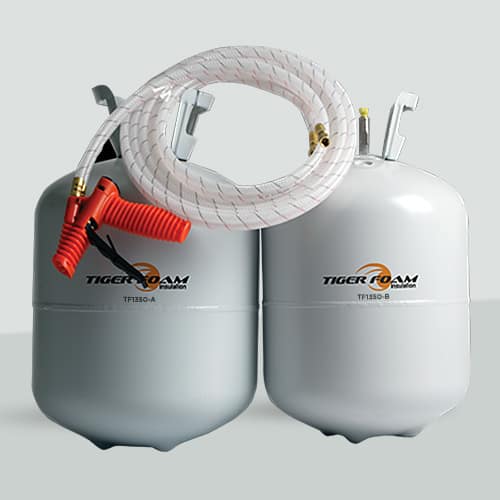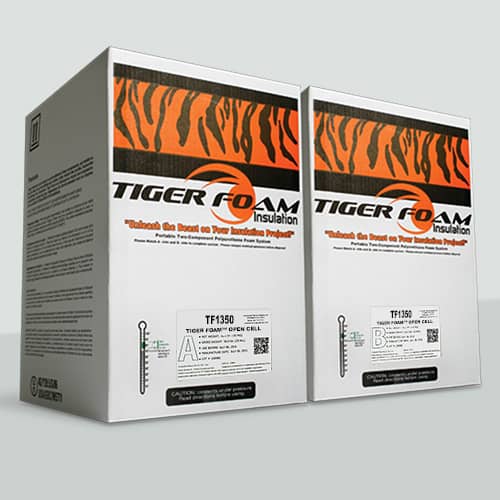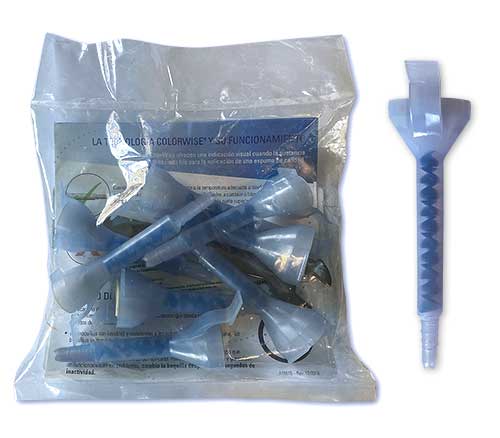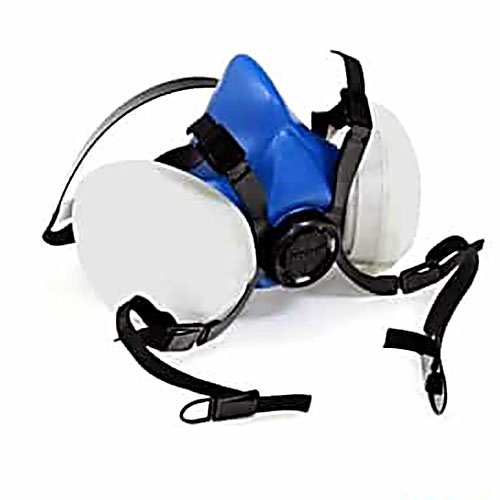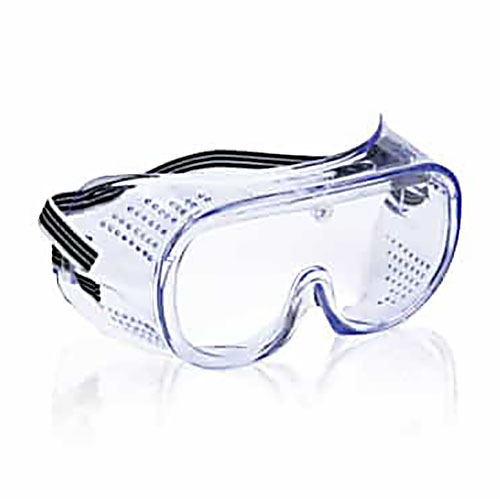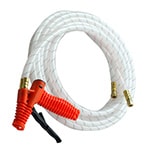Tiger Foam™ Open Cell Spray Foam
Applies to Product ID# TF450 and TF1350. Portable Spray Foam Insulation Systems by Commercial Thermal Solutions, Inc.
Product Description
Tiger FoamTM Spray Foam is a multiple purpose open cell, low density polyurethane spray foam that utilizes a non-flammable blowing agent. Tiger FoamTM Spay Foam is excellent for sound deadening and reducing noise levels.
Approvals and Standards
Tiger FoamTM Open Cell Spray Foam conforms to the requirements of ASTM E84 as a “Class 2” material, tested at 4” thickness.
Flame Spread: 50
Smoke Developed: 450
The STC rating indicates how well a wall assembly blocks airborne sound. Our wall assembly was comprised of 5/8” OSB (exterior), one layer of type X gypsum wallboard (interior), 2” x 4” studs with 3 inches of ® Tiger FoamTM Open Cell Spray Foam.
The NRC is a single number index for rating how absorptive a material is. Tiger FoamTM Open Cell Spray Foam has an NRC of .70 at 3 inches in thickness. It will absorb 70% of the sound that comes into contact with it and will reflect 30% of the sound back into space.
Applications
Spray foam onto any dry, clean surface in any direction; even to the underside of a floor or roof deck, to insulate, fill and seal various size voids, deaden sound or reduce vibration. This product will adhere to practically any substrate except Teflon®, oily surfaces, greases, polypropylene, polyethylene, silicone, seals, mold release agents & similar materials. Protect surfaces not to be foamed. Always read all safety data sheets and operating instructions including use of proper personal protective equipment prior to use. Tiger FoamTM Open Cell Spray Foam has a free-rise density of 0.75 lbs/ft3. (See page 2 of this document for complete technical data). This product is not recommended for “flash and batt” applications (ex: “Hybrid”).
Properties
Two-part, low density, open cell foam systems will begin to expand immediately upon chemical reaction of the “A” component (a polymeric isocyanate) and “B” component (a polyol blend with proprietary additive ratios) chemicals. The foam will cure to a semi-rigid open cell foam. Optimum application temperature is 90°F (32.2°C) but may be sprayed onto colder or warmer substrates, with slight effects on the foam characteristics. Cured foam is resistant to heat and cold, -200 to +240°F (-129 to +115°C), and to aging, but not UV rays (i.e. sunlight) unless painted, covered or coated. Cured PU foam is chemically inert and non-reactive in approved applications, and will not harm electrical wire insulations, Romex®, rubber, PVC, polyethylene (i.e. PEX), CPVC or other plastic. It is approved for use around wires, plumbing penetrations, etc., and contains no added formaldehyde.
Tiger FoamTM Open Cell Spray Foam fully expands and dries tack-free within 30-45 seconds, and fully cures within 1 hour.
Tiger FoamTM Open Cell Spray Foam systems are available in three non-refillable sizes to meet specific job applications requirements. When sprayed, the foam will create a seamless, continuous seal to insulate and protect against dust, air infiltration and pests.
Preparation for Use
Substrate must be clean, dry, firm and free of loose particles and free of dust, grease and mold release agents. Protect surfaces not to be foamed. Shake kits well before using.
Read the enclosed operating instructions available in every kit or they can be found on our website www.tigerfoam.com. Carefully read all cautions and warnings before use. Always refer to the local building codes before application of product.
Use
Warm tanks to 85°F-95°F (29°C-35°C). After following instructions for setup, attach appropriate hose to tanks A and B if needed (II-1350 size). Shake kits well before using. Open tank valves as directed. Materials are dispensed through the hoses. Attach the static cone nozzle to the end of the dispensing unit. The A-component and the B-component meet and mix in the disposable nozzle. With a nozzle attached to the two-component froth dispensing unit, dispense foam by squeezing the trigger of the unit. To interrupt or stop foaming process, release the trigger. Once foaming process has stopped, the dispensing unit must be reactivated within 30 seconds or a new nozzle must be installed. Fresh foam may be applied in several stages to reduce overfilling of void or damage to non-rigid, confined cavities. Cured foam can only be removed manually.
*For best results, warm kit for a minimum of 1 day at 85-95°F (29-35°C)
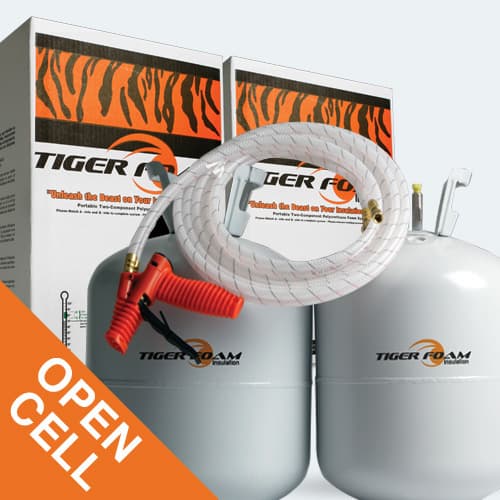
 TF1350 HFO Open Cell Spray Foam Insulation Kit
TF1350 HFO Open Cell Spray Foam Insulation Kit
